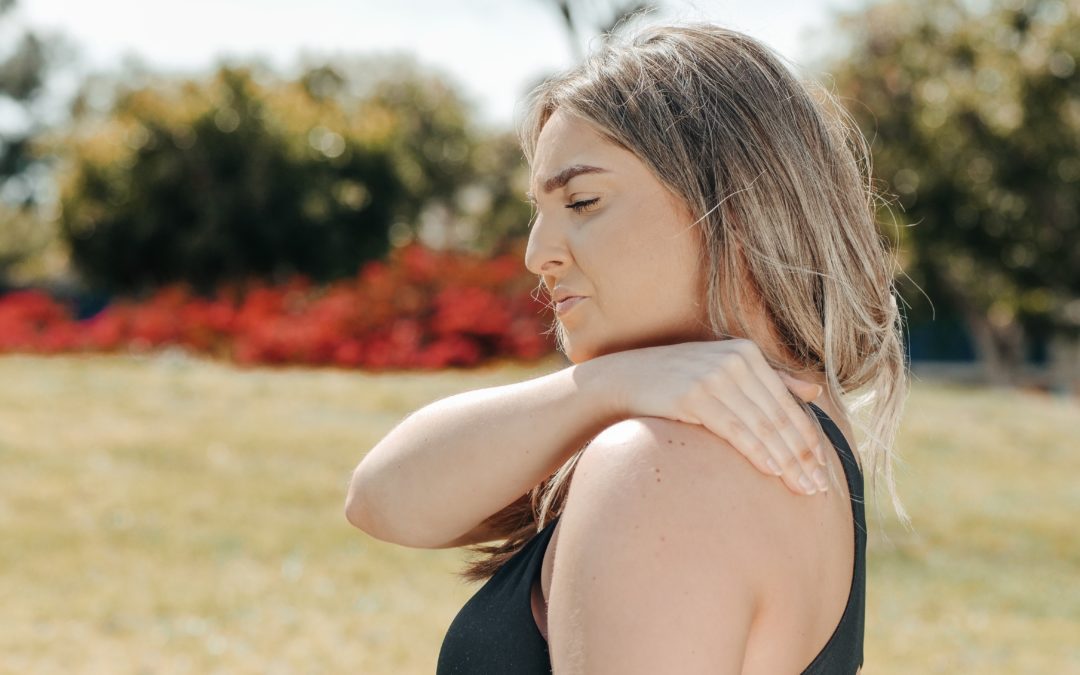The cervical spine has a large range of motion and sometimes that is at the expense of the necks stability. When the soft tissue is stressed it can lead to ligament “sprains” and muscle “strains.” The severity depends on the injury. Some heal in a matter of days and others can become long term problems.
Ligaments serve as the primary stabilizers and limit end range of motion. If movement is beyond the normal range of motion it will damage the ligaments including the anterior longitudinal ligament, posterior longitudinal ligament, ligamentum flavum, facet capsule, interspinous ligament, supraspinatus ligament and intervertebral disc.
Muscles also act as stabilizers that are more dynamic. They protect the neck as it is actively moved. A strain usually results from a muscle contraction in response to an expected force. These can damage the muscle tendons of the SCM, trapezius, levator, scalene, and paraspinal muscles.[1]
Causes of cervical sprain injuries
Whiplash is the leading cause of sprain and strain injuries. After that sporting accidents from football, hockey, wrestling, or skiing are the leading cause these injuries.[2] This can happen from contact to the head, falls, or moving heavy objects. Sometimes it is a singular event and other times it is the result of chronic repetitive overloading. If the muscle tendons or ligaments are stressed over an extended period this can lead to muscle fatigue, inflammation, and micro-tearing. This can also happen from prolonged static postures in poor workstations, overhead activity, sedentary lifestyles, repetitive movements, pregnancy, and obesity. Weakness in the neck can also lead to injury.
Cervical strains are common. Over 70% of people will have a strain in their neck over their lifetime. In the US that is over a million adults.[3] They are more common in adults because of the loss of the elasticity in the tissues. They are more severe in children because of the immature facets.[4]
Common symptoms of cervical sprain
Symptoms of a neck sprain usually develop gradually in the hours or days following an injury. These include constant dull neck pain that intensifies or becomes sharp with movement. Rest for 24-48 hours after pain is felt can be helpful but resting the neck for too long will lead to inactivity-stiffness. Pain is felt in the neck, upper shoulders, or between the shoulder blades. Headaches are common and in rare instances sprains of the upper cervical facet capsules can alter proprioception and result in vertigo. Often sprains are associated with muscle spasms to stabilize the neck.
Other signs include poorly localized pain, swelling, and loss of range of motion.
How to evaluate cervical sprain
First range of motion must be evaluated. Pain with passive range of motion suggests a sprain. Pain with resisted range of motion suggests a strain. With a strain there may be tenderness on the spinous processes and spasm of the neck muscles. Acute spasm is associated with a sprain and develops as a protective splinting mechanism to stabilize the neck.
Orthopedic assessment should include a neck flexion test, foraminal compression, lateral foraminal compression, maximum foraminal compression and cervical distraction. Ensure that there is no concurrent head injury or cervical instability. Any neurological findings or pain down the arm indicates possible instability and disc injury.
X-rays are rarely needed unless there is a serious injury and they have radiating neurologic signs or symptoms, midline cervical spine tenderness or significant (greater than 50%) loss of range of motion.[5] Radiographs may also be appropriate for patients with a history of cancer, bone disease, systemic disease, inflammatory arthropathy, steroid use, immunosuppression, or whose pain is unusually severe or prolonged. Excessive tearing of soft tissues initiates an inflammatory wherein normal healthy elastic tissue is replaced with less elastic scar tissue.[6]
Upper cervical chiropractic for cervical sprain
Controlling pain and inflammation are the goals of treatment once instability has been ruled out. Once the pain starts decreasing gentle cervical adjustments, neck mobilizations, and isometric strengthening can be used to assist in the acute phase of healing.[7] As treatment progresses trigger point therapy of the scalene, trapezius, levator, pectoral, and SCM can be used.
Then stabilization needs to be promoted with strengthening exercises and postural stress is reduced by changing making changes to the workstation.[8]
Exercises to help heal cervical sprain
To see more videos visit the Dr. Noah Volz YouTube channel.
Conclusion
Neck sprain injuries can be healed and this article gives you some suggestions on what to look for to determine you have a sprain and what to do about it. I hope that this information helps you. If you have any additional questions please leave a comment. In addition to this article you can also read the Guide to Chronic Neck Pain eBook.
References
[1] Jarvinen TA, Kaariainen M, Jarvinen M, Kalimo H. Muscle strain injuries. Curr Opin Rheumatol 2000 Mar;12(2):155- 61.
[2] Versteegen GJ, Kingma J, Meigler WJ, et al. Neck sprain not arising from car accidents: a retrospective study covering 25 years. Eur Spine J 1998;7(3):201–5.
[3] Hunter, Oregon K. “Cervical Sprain and Strain.” eMedicine. Eds. Martin K. Childers, et al. 29 May. 2008. Medscape. 18 Mar. 2009
[4] McGrory BJ, Klassen RA, Chao EY, et al. Acute fractures and dislocations of the cervical spine in children and adolescents. J Bone Joint Surg Am 1993;75(7):988–95.
[5] Stiell IG, Wells GA, The Canadian C-Spine Rule for Radiography in Alert and Stable Trauma Patients JAMA October 17, 2001, Vol 286, No. 15
[6] Croft PR, Lewis M, Papageorgiou AC, et al. Risk factors for neck pain: a longitudinal study in the general population. Pain. Sep 2001;93(3):317-25
[7] Hurwitz EL, Aker PD, Adams AH, et al. Manipulation and mobilization of the cervical spine. A systematic review of the literature. Spine. Aug 1 1996;21(15):1746-59; discussion 1759-60
[8] Weinhardt, C., and K. D. Heller. “A Systematic of the Value of Physical Therapy in Whiplash Neck Injury.” Z Orthop Ihre Grenzgeb. 140 5 (2002): 499-502. National Center for Biotechnology Information. National Library of Medicine. 18 Feb. 2009

